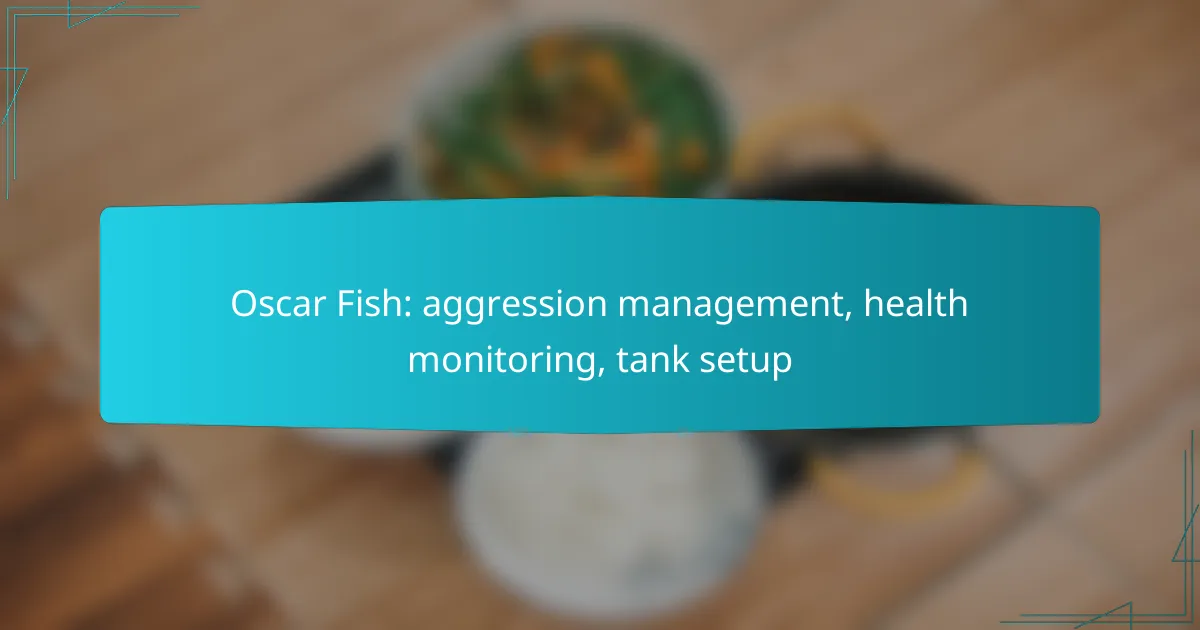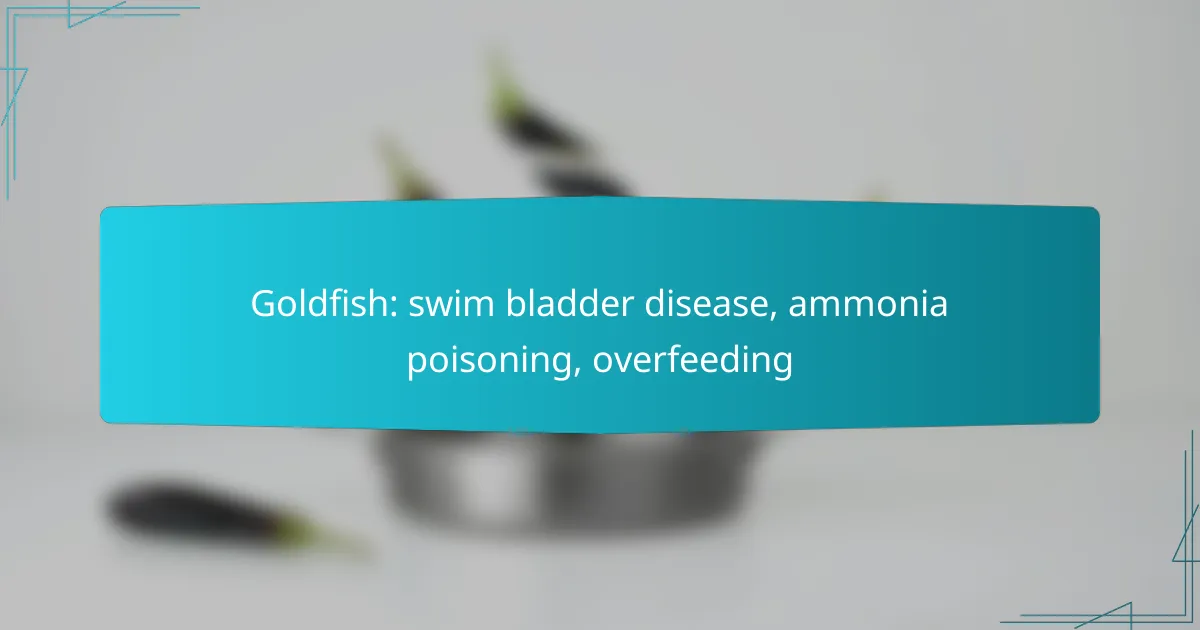Siamese Fighting Fish require careful management to thrive, including proper tank separation to minimize aggression and territorial conflicts. A consistent feeding schedule of two meals per day is crucial for their health, while regular monitoring of water quality and overall well-being ensures they remain vibrant and active. By focusing on these key aspects, you can create a suitable environment for these beautiful fish.

How to separate Siamese Fighting Fish tanks?
To effectively separate Siamese Fighting Fish tanks, it’s essential to create distinct environments that prevent aggression and territorial disputes. This involves using physical dividers, maintaining different water conditions, and closely monitoring the fish’s behavior.
Use dividers for territorial disputes
Using dividers is crucial to prevent territorial aggression among Siamese Fighting Fish. These dividers can be made of acrylic or mesh and should be tall enough to prevent the fish from jumping over. Ensure that the dividers are securely placed to avoid any accidental breaches.
When setting up the tank, consider the layout and the placement of the dividers to minimize visual contact. This can help reduce stress and aggression, allowing each fish to establish its own territory without interference.
Maintain separate water conditions
Each tank should have its own unique water conditions tailored to the specific needs of the fish. This includes maintaining appropriate temperature, pH levels, and hardness. For Siamese Fighting Fish, a temperature range of 24-28°C (75-82°F) is ideal.
Regularly test the water parameters in each tank to ensure they remain stable. Sudden changes can lead to stress and health issues, so gradual adjustments are recommended when necessary.
Monitor aggression levels
Regularly observing the fish for signs of aggression is essential in a separated setup. Look for behaviors such as flaring gills, chasing, or biting. If aggression is noted, consider adjusting the tank environment or providing additional separation.
Keeping a close eye on their interactions can help you identify any potential issues early on. If one fish consistently displays aggressive behavior, it may be necessary to further isolate it from others.
Provide hiding spots
Incorporating hiding spots in each tank can significantly reduce stress and aggression among Siamese Fighting Fish. Use plants, rocks, or commercial decorations that offer shelter and security for the fish.
Ensure that there are multiple hiding spots available, as this allows the fish to retreat when feeling threatened. A well-structured environment promotes a more peaceful coexistence and encourages natural behaviors.

What is the ideal feeding schedule for Siamese Fighting Fish?
The ideal feeding schedule for Siamese Fighting Fish involves providing them with two meals each day. This routine helps maintain their health and vitality, ensuring they receive the necessary nutrients without overfeeding.
Feed twice daily
Feeding Siamese Fighting Fish twice daily is essential for their growth and energy levels. Aim for small portions that they can consume within a few minutes to prevent uneaten food from polluting the tank. A good rule of thumb is to feed them once in the morning and once in the evening.
Monitor their behavior and adjust the feeding amounts as needed. If they seem to be gaining excessive weight or if leftover food accumulates, reduce the portion size accordingly.
Use high-quality pellets
High-quality pellets are crucial for the health of Siamese Fighting Fish. Look for pellets specifically formulated for bettas, as they contain the right balance of protein, fats, and vitamins. Ingredients like fish meal and shrimp are beneficial for their diet.
When selecting pellets, check for a guaranteed analysis on the packaging to ensure they meet nutritional standards. Avoid low-quality brands that may contain fillers or artificial additives, which can harm your fish in the long run.
Incorporate live or frozen food
Incorporating live or frozen food into the diet of Siamese Fighting Fish can enhance their nutrition and stimulate their natural hunting instincts. Options such as brine shrimp, bloodworms, or daphnia can be offered a few times a week as a treat.
These foods provide essential nutrients and can help improve color and vitality. However, ensure that any live food is sourced from reputable suppliers to avoid introducing diseases into your aquarium.

How to ensure the health of Siamese Fighting Fish?
Ensuring the health of Siamese Fighting Fish involves maintaining clean water, monitoring for illness, and providing a nutritious diet. Regular care and attention to these aspects can significantly enhance their well-being and longevity.
Regular water changes
Regular water changes are crucial for the health of Siamese Fighting Fish. Aim to change about 25-50% of the tank water weekly to remove toxins and maintain optimal water quality. Use a water conditioner to eliminate harmful chemicals from tap water.
Test the water parameters regularly, including pH, ammonia, nitrite, and nitrate levels. Ideal conditions typically include a pH of 6.5-7.5 and low ammonia and nitrite levels. Keeping the water clean helps prevent stress and disease.
Monitor for signs of illness
Monitoring for signs of illness is essential for the early detection of health issues in Siamese Fighting Fish. Look for symptoms such as lethargy, loss of appetite, discoloration, or unusual swimming patterns. These can indicate stress or disease.
Regularly observe your fish during feeding times and throughout the day. If you notice any abnormal behavior, consider isolating the affected fish and consulting a veterinarian or an aquarium specialist for advice on treatment options.
Provide a balanced diet
Providing a balanced diet is vital for the health of Siamese Fighting Fish. Feed them a variety of high-quality foods, including pellets, flakes, and occasional live or frozen foods like brine shrimp or bloodworms. This variety ensures they receive essential nutrients.
Establish a feeding schedule of 1-2 times per day, offering only what they can consume in a few minutes. Avoid overfeeding, as this can lead to water quality issues and health problems. A healthy diet supports their immune system and overall vitality.

What are the common health issues in Siamese Fighting Fish?
Siamese Fighting Fish, or Betta fish, are prone to several health issues that can affect their well-being. Common problems include fin rot, ich (white spot disease), and swim bladder disorder, each requiring specific care and attention to ensure the fish remains healthy.
Fin rot
Fin rot is a bacterial infection that leads to the deterioration of the fins and tail of the fish. It often results from poor water quality or physical injuries, making it essential to maintain clean tank conditions and avoid sharp decorations.
To treat fin rot, improve water quality through regular changes and consider using antibacterial medications. Monitor the fish closely, as untreated fin rot can lead to more severe health issues.
Ich (white spot disease)
Ich, or white spot disease, is a common parasitic infection characterized by white cysts on the fish’s body and fins. This condition thrives in stressed or poorly maintained environments, so ensuring optimal tank conditions is crucial.
Treatment typically involves raising the water temperature and adding specific medications designed to kill the parasite. Quarantine affected fish to prevent spreading the infection to others in the tank.
Swim bladder disorder
Swim bladder disorder affects the fish’s ability to control its buoyancy, causing it to float uncontrollably or sink to the bottom. This issue can arise from overfeeding, constipation, or infections.
To manage swim bladder disorder, adjust the feeding schedule to avoid overfeeding and provide a balanced diet. If constipation is suspected, fasting the fish for a few days or offering a pea can help alleviate the problem.

How to choose the right tank size for Siamese Fighting Fish?
Choosing the right tank size for Siamese Fighting Fish is crucial for their health and well-being. A minimum of 5 gallons is recommended to provide adequate space for swimming and territorial behavior.
Minimum 5-gallon tank
A minimum 5-gallon tank is essential for keeping a single Siamese Fighting Fish. Smaller tanks can lead to poor water quality and increased stress for the fish. Larger tanks, such as 10 gallons or more, allow for better filtration and more stable water conditions.
When selecting a tank, consider the dimensions as well. A longer tank provides more swimming space, which is beneficial for the fish’s physical health and reduces aggression.
Consider tank mates
Siamese Fighting Fish are known for their aggressive nature, especially towards other males. If you plan to add tank mates, choose species that are peaceful and can thrive in similar water conditions. Good options include certain types of snails or bottom-dwelling fish that won’t compete for territory.
Always monitor interactions when introducing new fish to the tank. It’s wise to have a backup plan, such as a separate tank, in case aggression escalates.
Assess filtration needs
Effective filtration is vital in a tank housing Siamese Fighting Fish, as they produce waste that can quickly degrade water quality. A filter rated for at least double the tank’s volume is recommended to maintain clean water. For a 5-gallon tank, look for filters designed for 10-gallon setups.
Regular maintenance of the filtration system is necessary. Clean or replace filter media as needed, and perform partial water changes weekly to keep the environment healthy.

What are the best tank mates for Siamese Fighting Fish?
The best tank mates for Siamese Fighting Fish, also known as bettas, are typically non-aggressive species that can coexist peacefully without triggering territorial behavior. Ideal companions include fish that swim in different areas of the tank and have a calm demeanor.
Compatible Fish Species
When selecting tank mates for Siamese Fighting Fish, consider species like neon tetras, guppies, and Corydoras catfish. These fish are generally small, peaceful, and occupy different levels of the aquarium, reducing the likelihood of conflict.
Avoid keeping bettas with fin-nipping species such as tiger barbs or aggressive fish like cichlids, as these can provoke stress and injury. Always monitor interactions closely when introducing new tank mates.
Tank Size and Environment
A larger tank, ideally 20 gallons or more, is recommended for housing a Siamese Fighting Fish with other species. This provides ample space for each fish to establish its territory and reduces stress. Ensure the tank has plenty of hiding spots and plants to create a comfortable environment.
Maintain stable water conditions, including temperature and pH, to support the health of all fish. Regular water changes and filtration are essential to keep the environment clean and safe.
Feeding Considerations
Feeding Siamese Fighting Fish and their tank mates requires attention to dietary needs. Bettas thrive on high-protein diets, so offer quality pellets or frozen foods. Ensure that any tank mates receive appropriate food types that suit their dietary requirements.
Feed fish at the same time but in separate areas to prevent competition and aggression. A feeding schedule of once or twice daily is typically sufficient, adjusting portions to avoid overfeeding.










